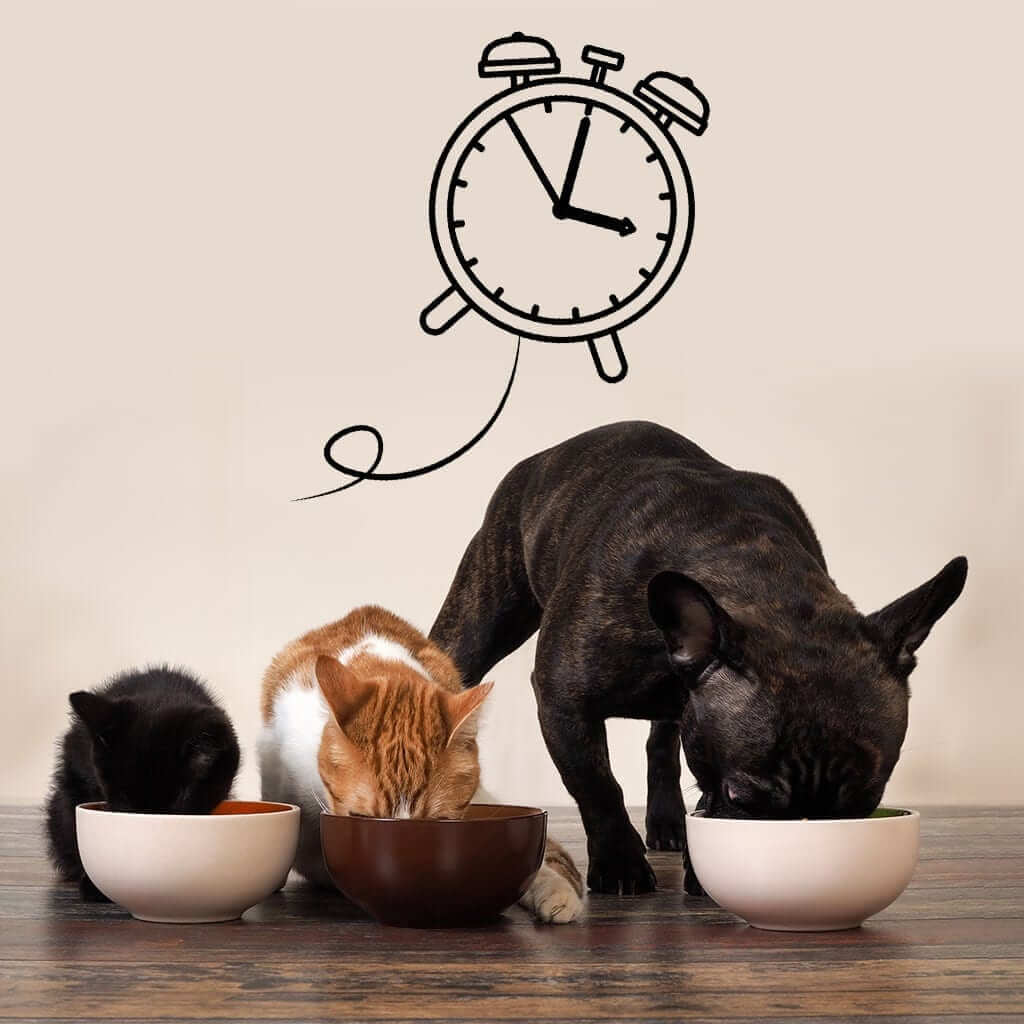Different Eating Habits Of Diabetic Pet
If I had my way, diabetic dogs and cats would be fed twice a day with their insulin injections. That sounds all very good on paper, but the truth of the matter is that our pets may have a different opinions. Cats especially are notorious for nibbling throughout the day. I joke that in my home pets get the same authority as humans – that it is a “democracy” in the Sutton household. In all honesty, however, the truth is that the cats wear the pants in my family. I have never had a dog boss me around so much as my cats do. If I were to feed my cats a mere two times daily, there would be no end to them telling me about it. My particularly food-motivated cat sometimes looks at the empty food bowl and then looks at me. I’m certain she is thinking, “Human, are you daft?”
My compromise for diabetic pets who think they are constantly starving is to try to get them to eat the majority of their calories at the same time as the insulin injection. For dogs who insist on a mid-day treat, I encourage a low-calorie veggie such as green beans as the snack. For cats, it is the same low-carbohydrate food as they receive as a meal, but hopefully the majority of food is given with the insulin. This stubborn food-nibbling preference of cats is likely why we tend to have greater success with longer-acting insulin for putty tats (i.e. glargine, PZI and demetir). Glargine has a relatively steady action over its duration and has been referred to as a “peak-less” insulin. Most dogs readily accept “meal” feeding twice daily, so we tend to go with intermediate-acting insulin as our first choice, such as Vetsulin and NPH.
If you have a diabetic with a healthy appetite you are lucky! It is a blessing to have a food-motivated diabetic pet compared to a finicky diabetic pet. It makes it much easier to treat the diabetes. It’s easier to predict how much insulin to give. We evaluate the insulin dosage based on periodic blood glucose curves. You probably don’t need to check a glucose before each and every injection once your pet is regulated IF you give equal portions and equal doses of insulin every 12 hours and IF your pet’s glucose is predictable. Of course, you must always use common sense.
Help Your Practice Manage Diabetes Mellitus
View and download resources and tools that will assist your hospital, inform your team, and help with clients. Sort by:
Create a blood glucose curve to monitor and evaluate diabetes treatments.
Create a customized, printable form for clients about their new diagnosis.
Access online tools and more to support staff and pet parents.
How about the timing of meals?

How long after eating should you give a dog insulin?
I can’t think of a disease that causes more owner anxiety than diabetes. Something about having to give a shot twice a day, every day, to an animal you love is very daunting. Then you do it a couple times and suddenly, it’s a breeze! I’ll also answer the common question of “how far apart/early/late can I give the insulin?”
Insulin is kept in the refrigerator. Some pens made for humans can be left out for periods of time, but for the most part, plan on refrigerating the insulin. If you have a decent drive to the pharmacy or vet office, bring a little cooler to bring the insulin home. It needs to be gently mixed before each dose. Vetsulin, an insulin made specifically for dogs and cats, can be shaken like a polaroid picture. Other insulins need to be gently inverted in a rocking motion, not shaken like orange juice.
Your veterinarian will show you how to give shots, and make sure you get some practice with saline solution while still at the clinic! When I have clients practice in front of me, I can watch the fear leave their body after 1-2 practice shots. Nobody every needs a third – they walk out confidently! It’s 90% mental/fear, and once you get over it, you’re home free.
If multiple people will be giving the shots, I suggest having a pow wow on measuring the insulin. 3 units to my eyes might look like 3.5 to yours. So, get everyone on the same page.
Pick a time (two times actually, 12 hours apart) and stick with it. Most people do 7 am/7pm or something similar. I have a client who works late and gives the insulin at midnight and noon! Do what works with your schedule. I often feed the animal first, make sure they eat, then give the insulin. Some veterinarians recommend giving the shot 30 minutes before a meal. That makes the most sense biologically, but then what if the pet doesn’t eat? You have insulin in them that you can’t get out! And now we worry about their blood sugar dropping too low. If we make sure they eat before giving the shot, that’s a non-issue.
How can you tell if it’s working? How do you know when to worry? Check out the rest of the Diabetes series:
Check out our podcast episode about diabetes. In an hour, we couldn’t even cover every detail, but you’ll learn and laugh with us along the way!